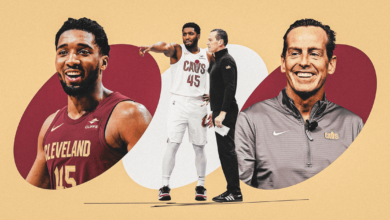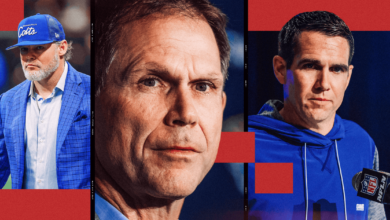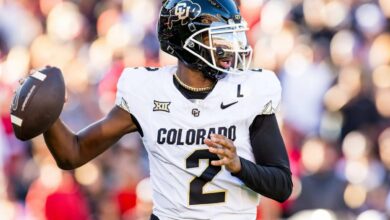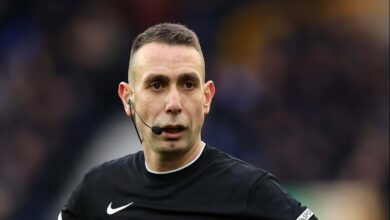Shohei Ohtani’s offense is much better than other NL MVP candidates. Does his lack of defense matter?
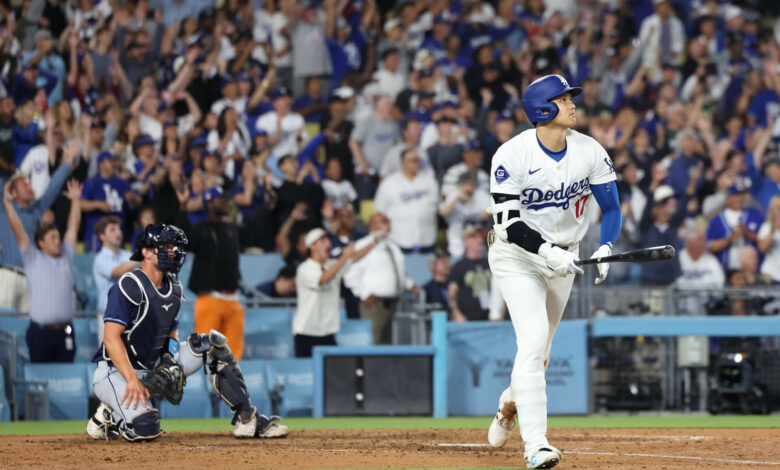
There it is, clearly stated in the Baseball Writers Association of America’s instructions to voters for anyone who wants to play a game of Shohei Ohtani’s quest to win his third MVP award in four years.
In listing the five criteriawhich remain the same as they were on the first ballot in 1931, the BBWAA begins with: “Actual value of a player to his team, that is, strength of offense and defense.”
Ohtani, recovering from major elbow surgery, isn’t playing his version of defense this season, performing like an elite starting pitcher. But he’s still the favorite for National League MVP because his offense is so much better than everyone else’s.
No primary DH has ever won an MVP award. However, the BBWAA’s instructions make it clear that pitchers and designated hitters are eligible. They also state, “There is no single definition of what Most Valuable means.”
In other words, voters can choose whoever they want, for whatever reasoning they want. The process, however, is completely transparent. For each award, the BBWAA releases the ballots of all 30 voters, two from each city in each respective league. So voters must be prepared to defend their selections, and most are well aware that questionable choices on social media can cause a backlash.
Ohtani is another unique case. He entered Tuesday with 41 home runs and 40 stolen bases in 44 attempts, making him the sixth 40-40 player in AL/NL history. His latest milestone is partly the product of running more after being moved to the leadoff position in place of Los Angeles Dodgers teammate Mookie Betts, who suffered a broken left hand on June 16 and missed nearly two months.
Major League Baseball implemented rules last season to encourage base stealing, but no player has gone 45-45, let alone 50-50. In the likely event that Ohtani makes history, he will be very hard to deny — just as Aaron Judge was hard to deny in the AL after his record-setting 62-homer campaign in 2022, even though Ohtani had 34 homers and an .875 OPS as a hitter and a 2.33 ERA in 166 innings as a pitcher.
In MVP races, the terms of engagement change frequently. Voters generally base their decisions on a variety of metrics, including wins above replacement, an estimate of a player’s combined offensive, defensive and base running value — and one that different websites calculate in different ways.
But many voters are also influenced by narratives. Ohtani has one narrative that works for him: the unicorn narrative. He’s great, nobody does what he can. He also has maybe two narratives that work against him. The anti-DH narrative. I’m definitely not going to vote for half a player! And the Ohtani fatigue story. Let’s find someone else.
The anti-DH narrative didn’t stop David Ortiz from finishing in the top five five times in a row between 2003 and ’07, including two top-three finishes. Frank Thomas (1991, 2000), Paul Molitor (1993), Edgar Martinez (1995), Victor Martinez (2014) and Yordan Alvarez were the other DHs to finish in the top three.
Right now, Ohtani isn’t even the only strong DH candidate in the NL. Marcell Ozuna of the Atlanta Braves leads the NL in batting average and RBIs, and is fairly close to Ohtani in slugging, OPS and adjusted OPS+, which takes into account ballpark factors. Still, primary DHs have a distinct handicap in the voting. Otherwise, one would have won already.
But who are realistic alternatives to Ohtani?
The first challenger was Betts, whose move to shortstop and prodigious hitting made him an early MVP favorite. That all changed when Dan Altavilla of the Kansas City Royals broke Betts’ hand with a 97.9-mph fastball on June 16, sidelining him for 45 games. Upon his return on August 12, Betts was moved back to right field.
Arizona Diamondbacks second baseman Ketel Marte then put together a strong record, but was derailed by a sprained left ankle. He has only been allowed to bat six times since August 8 and has been on the injured list since August 19.
The final threat to Ohtani is New York Mets shortstop Francisco Lindor, who is approaching 30-30 and is considered an elite defensive shortstop based on above-average outs, though he is only slightly above average in runs saved.
Lindor led Ohtani in FanGraphs’ version of WAR through Monday (6.6-6.2), but trailed him and Marte in Baseball Reference’s version (6.6-6.0-5.8). Mike Petriello of MLB.com, a leading statistical analyst, cautions don’t put too much emphasis on to small decimals of WAR, arguing that the differences are small enough that the players’ values are nearly identical. The discrepancies in the two websites’ calculations stem from FanGraphs bases its defensive component on outs above average and Baseball Reference based this on the number of runs saved by the defense.
The difficulty of measuring defense makes it harder to evaluate a player’s defensive prowess when voting for MVP. Lindor and Marte clearly contribute more than Ohtani defensively. Lindor is a candidate to win his first NL Gold Glove. He hasn’t missed a game, while Ohtani has missed three. But is that enough to offset Ohtani’s 168-point lead in OPS going into Tuesday’s game?
Ohtani also held a significant lead over Lindor in win probability added, a category led by San Diego Padres left fielder Jurickson Profar, another potential top-10 MVP finisher. Win probability added measures the importance of a specific plate appearance, stolen base or caught stealing, and quantifies the percentage change in a team’s chances of winning from one event to the next.
While Ohtani’s stolen base attempts have increased significantly over the course of the season — he’s had 18 total in the first three months, then 14 in July and 12 so far in August — his motivation seems to stem more from a desire to help his team than to pad his numbers. All of his stolen base attempts in August made sense within the context of the game.
There’s still one month left in the season. The NL MVP race could still change. Maybe Marte returns to lead the Diamondbacks past the Dodgers for the NL West title. Maybe Lindor continues his miraculous play since mid-May and lifts the Mets past the Braves for the third NL wild card.
A primary DH winning MVP would be hard for some to swallow, even if the instructions to voters specifically provided for that possibility. However, the only way a DH should win is if he stands out enough offensively on the field to overcome his lack of defensive contribution.
At 40-40, Ohtani is damn close. At 45-45 or 50-50, he would pretty much end the conversation.
(Top photo by Shohei Ohtani: Skalij/Los Angeles Times via Getty Images)

